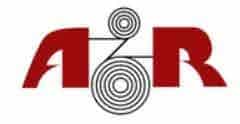METAL PROCESSING PLANT RELOCATION
ABOUT THIS PROJECT
This company manufactures a wide range of truck specific automotive components. The project involved the complete relocation of the operation to a new building with minimal impact on sales. Based on historical sales data, product was built for inventory. Time forecasts for relocation of specific equipment was used to forecast inventory quantities.
Due to issues inherent in the metal fabrication industry, structural suitability of the new location and equipment footing design were critical issues. Electrical requirements were a central consideration for the new location as were the soil conditions and the bearing strength of the already in place concrete slab flooring.
The client was desirous to act as its own contractor wherever possible, which had the potential for a conflict of interest between the consultant (EC) hired by the client and the contractor(client) selected to execute the task. EC successfully completed the task to the satisfaction of the client as well as the Authorities Having Jurisdiction (AHJ).
Hand in hand with the above substantial coordination with the Authority Having Jurisdiction (AHJ), the City of Richmond, in order to meet all required permitting and inspections in order to secure the permit to operate when the move was completed.
THE SCOPE OF WORK WAS COMPOSED OF THE FOLLOWING MAJOR DIVISIONS:
- Racking (finished product ready for shipment as well as raw material inventory)
- HVAC & Dust Collection: This was a critical issue because of metal grinding, welding and fume generation and propagation.
- Slab and foundation: Due to the fact that the move was to a pre-existing structure, the slab and foundations required special attention because of the varied loading presented by metal stamping and pressing operations (vibrations) in addition to the actual loading presented by the equipment itself.
- Electrical & Power Distribution: Limited availability of electricity at the location being moved to meant that very strict controls had to be put in place not to exceed the available power. Otherwise a major upgrade of electrical utility availability could jeopardize the project.
- Utility Piping distribution (Compressed Air & Nitrogen): Some of the processes had a demand for liquid nitrogen and this placed some critical constraints on piping systems and storage.
- Logistics & relocation of equipment: Equipment had to disconnected, and in some cases disassembled, before the move. Both involved substantial planning. Marking of all disconnected/disassembled equipment for ease of re-installation as well as keeping control of the parts inventory and its association with the originating equipment.
- Scheduling the move in such a manner that when the equipment was moved its re-installation could proceed without creating a hazard for other equipment yet to come.
- Finalizing equipment layout for production efficiency and establishing footing requirements for structural examination.
- Subsurface scanning to determine the location of utilities for supply and drainage.

Client:
A&R Metal
Sector:
Project Category:
Facility Expansion
Tenant Improvements, Greenfield, & Relocations
Purpose
Capacity
Efficiency
Compliance